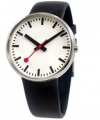Maths Challenge 2009
by Burkard Polster and Marty Ross
The Age, 30 November 2009
Welcome to the Maths Challenge 2009. This year the Maths Masters - Burkard Polster and Marty Ross - offer 30 puzzles, perfect to fill a lazy summer's day (or three). The puzzles are arranged in three levels: one point, two points and - for those who like their maths fiendishly hard - three points. Some are from the great puzzlemasters, and some from our number gurus' own weird ponderings. Answers will appear on the Maths Masters website www.qedcat.com on December 7, though the desperate and impatient are invited to contact them for hints. As always, all correspondence will be entered into. If you disagree with any of their solutions, or feel you have a better solution, please let them know.
One point
1. This is Santa Claus's house. Starting at one of the corners, can you draw his house without lifting your pencil and without drawing any line twice?

2. Here is a beautiful set of five Russian Matryoshka dolls. What is the smallest number of coins you need so that you can put a different number of coins in each of the dolls?

3. What number does the question mark stand for?


4. A trumpet has three valves. Satchmo can produce different musical notes by pressing different combinations of the valves. If he doesn't change the way he blows into the trumpet, how many different notes can Satchmo play? What if he plays on a trumpet with four valves?

5. You go to a party and count a total of 20 guests. If everybody shakes hands with everybody else, how many handshakes are there?
6. In the movie Die Hard with a Vengeance, Bruce Willis and Samuel L. Jackson are challenged with various puzzles, which they must solve in order to stay alive. The first one is: As I was going to St. Ives, I meet a man with 7 wives, every wife had 7 sacks, every sack had 7 cats, every cat had 7 kittens. Kittens, cats, sacks and wives, how many were going to St. Ives? My phone number is 555- ... . Can you save Bruce and Sam by completing the telephone number?

7. Between midnight and noon, how many times does the minute hand of a watch overtake the hour hand?

8. A pencil with a pentagonal cross-section has a famous logo printed on one of its five sides. If you roll the pencil across the table what are the chances that it will stop with the logo facing up?

9. The Maths Masters own five cats: Archimedes, Euclid, Fermat, Penrose and Zeno. Archimedes is older than Euclid. Fermat is older than Zeno but younger than Penrose. Zeno is older than Euclid. Penrose is younger than Archimedes. List our cats in order, from oldest to youngest.

10. What's the next number in this sequence?
Two points
11. You have three pizzas, with diameters 15cm, 20cm and 25cm. You want to share the pizzas equally among your four customers. How do you do it? What if you want the pizzas sliced into the minimum total number of pieces?

12. A familiar frustration is looking into a bathroom mirror: you can see only part of your body. In an attempt to solve the problem, you step backwards a pace. Does this result in you seeing more or less of yourself?

13. Here's a new version of noughts and crosses. The board is the same as usual. However, on each turn the player can choose to draw either a nought or a cross. The winner is the person to complete three in a row of either noughts or crosses. The usual version of Noughts and Crosses should always end in a draw (as long as no one goofs). What about for this new version?

14. A chocolate shop is selling chocolate frogs, but they forget to include the 10% GST in the price on the packages. They are also offering a 20% discount on bulk purchases of strawberry chocolate frogs. You stagger up to the cashier with a sackful of strawberry chocolate frogs, and you are given a choice: you can have the GST added first and then calculate the bulk discount, or the other way around. Which do you choose?

15. Write down the largest number possible using each of the digits 1, 2 and 3 exactly once, and no other mathematical symbols.

16. The indicated lines have length 2. Which circular ring has the greater area?

17. What is the secret to this ordering of the numbers from 0 to 9?
18. The orange square and the green square each have area 1. If a corner of the green square coincides with the centre of the orange square, how large is the area where the squares overlap?

19. A ladder is leaning against a wall. The base of the ladder starts sliding away from the wall, with the top of the ladder sliding down the wall. As the ladder slides, you watch the red point in the middle of the ladder. What figure does the red point trace? What about other points on the ladder?

20. What, if anything, does this square root monster evaluate to?

Three points
21. A mysterious square has materialized in the middle of the MCG, hovering in mid-air. The heights above the ground of three of its corners are 13, 21 and 34 metres. The fourth corner is higher still. How high?

22. If you choose four points in the plane, there are six distances between the various pairs of points. However, for a square there are actually only two distinct distances. Can you find another way to choose the points so there are only two different distances? And another?

23. A riffle shuffle of a deck of cards works as follows: the top half and the bottom half of the deck are separated, and then the cards are interleaved as shown in the diagram.

Suppose you start with the deck arranged in a certain order, and you keep riffle shuffling, always with the bottom half of the deck (the red cards in the diagram) contributing the lower cards in the riffle. How do you know that the deck will eventually return to the starting arrangement? If you use a deck of 10 cards, how many shuffles does it take to get back to the beginning?
24. You have a pear and an apple. You're not hungry, so you pass the time seeing how a loop of wire can lie snugly along the surface of the apple. Must one of those wire loops, without any further bending, also lie snugly on the pear?

25. You appear on a TV game show, where you are given the choice of three doors. Behind one door is a brand new Ferrari, and behind the other two doors are man-eating Bengal tigers (cousins of QED cat). You pick Door 1, and your host, Simon the Likeable, opens Door 2, revealing a tiger. Beating away the tiger, Simon makes you an offer: "If you wish, you may switch your choice from Door 1 to Door 3." Should you?

26. The weird purple curve below is actually a loop that never runs into itself. Part of the curve is hidden under the blue square. Once the square is removed, will it be possible to draw a path that connects the two orange points without running into the purple curve?

27. As a magical Christmas present your father gives you infinitely many boxes, labeled 1, 2, 3, 4 and so on. Your mother's present to you is a set of "wooden fractions": one block in the shape of each fraction between 0 and 1. Unfortunately each box is only big enough to hold one fraction. Do you have enough boxes for all the fractions?

28. The Maths Masters have invited you to play a game. The game uses three dice, with sides numbered as follows:
DIE A: 3, 3, 5, 5, 7, 7,
DIE B: 2, 2, 4, 4, 9, 9,
DIE C: 1, 1, 6, 6, 8, 8.
To play the game, you each choose a die and roll it, with the high number scoring a point. You then put the dice back, each choose and roll again, and so on. First to 10 points wins. The Maths Masters seem to win much more often! Why? What is our Maths Masterly strategy?

29. Start with an equilateral triangle of area 1. Remove the middle equilateral triangle as indicated, leaving three smaller triangles. Then remove the middle triangles from each of those, and so on. If you keep on going forever, how much will be left of the original triangle? Anything?

30. What, if anything, is this crazy fraction?

Good luck!
Burkard Polster teaches mathematics at Monash and is the university's resident mathemagician, mathematical juggler, origami expert, bubble-master, shoelace charmer, and Count von Count impersonator.
Marty Ross is a mathematical nomad, currently lecturing at the University of Melbourne. His hobby is smashing calculators with a hammer.
www.qedcat.com
Copyright 2004-∞ ![]() All rights reserved.
All rights reserved.